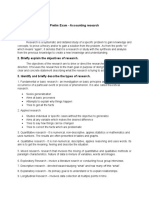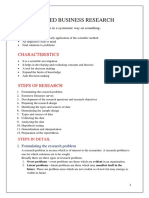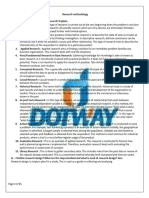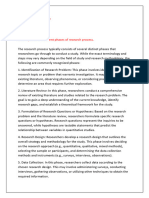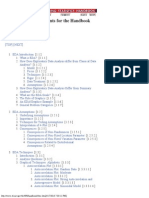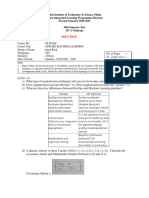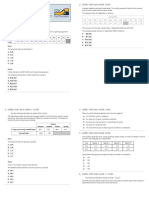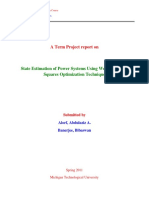0% found this document useful (0 votes)
11 views21 pagesResearch Methodology
The document provides an in-depth exploration of various types of research, including basic, applied, descriptive, analytical, quantitative, qualitative, conceptual, and empirical research, with examples relevant to semiconductor technology. It outlines the research process in detail, from formulating a research problem to reporting findings, and emphasizes the importance of literature in guiding research. Additionally, it discusses the significance of novelty in research, particularly in PhD work, and presents a hypothesis related to integrating 3D stackable DRAM and NAND flash memory, along with the research flow to test it.
Uploaded by
DevisriCopyright
© © All Rights Reserved
We take content rights seriously. If you suspect this is your content, claim it here.
Available Formats
Download as DOCX, PDF, TXT or read online on Scribd
0% found this document useful (0 votes)
11 views21 pagesResearch Methodology
The document provides an in-depth exploration of various types of research, including basic, applied, descriptive, analytical, quantitative, qualitative, conceptual, and empirical research, with examples relevant to semiconductor technology. It outlines the research process in detail, from formulating a research problem to reporting findings, and emphasizes the importance of literature in guiding research. Additionally, it discusses the significance of novelty in research, particularly in PhD work, and presents a hypothesis related to integrating 3D stackable DRAM and NAND flash memory, along with the research flow to test it.
Uploaded by
DevisriCopyright
© © All Rights Reserved
We take content rights seriously. If you suspect this is your content, claim it here.
Available Formats
Download as DOCX, PDF, TXT or read online on Scribd
/ 21















